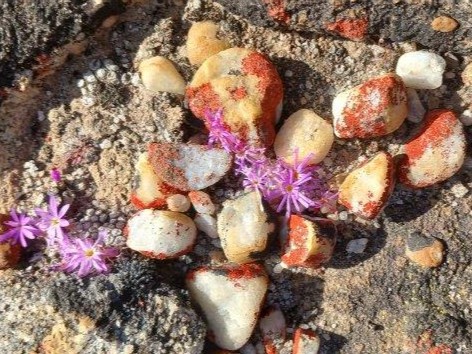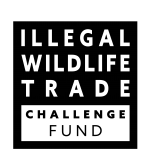Conserving endemic Karoo succulents

Connophytum minusculum. Credit - Zanné Brink.
Conserving succulents: Designing interventions based on social-ecological system dynamics
The Succulent Karoo Biome is home to a myriad of endemic succulent species which has captivated the imagination of people over time. This is due to the uniqueness of the dwarf succulent plant species that have adapted to harsh environmental conditions, allowing the plants to thrive with very limited water while providing an impressive floral bouquet when conditions are favourable. The biome spans an area of approximately 111,000 km², allowing the specialist species to be found at various localities based on the specific species’ environmental needs. Due to the arid region in which the species occur, it is also home to a special kind of human inhabitant. Small communities dot the landscape, supported mostly through sheep farming activities and, more recently, mining and renewable energy developments.
As is often the case, a species can be targeted for its aesthetic qualities at the expense of species or ecosystem health. The recent surge in flora biodiversity crime has emphasised the uniqueness of species, creating an international market for numerous species found nowhere else on Earth. To address this, the Endangered Wildlife Trust has taken an active role in generating information gathered from within the communities impacted by plants being removed from their natural habitat.
"The project is focused on understanding the social-ecological system dynamics of succulent poaching to develop an informed approach to conserve succulents... and to gathering information to assess the livelihood needs of the local community."
Although the demand for succulents, both locally and globally, is a driver for the increase in the illegal trade, the system dynamics of poaching, and what drives poaching activities within communities, are not clearly understood. Due to the variability of areas, low communication networks, and great distances between communities, the opportunities for solutions to protect succulents near communities has not been explored. This Evidence project is focused on understanding the social-ecological system dynamics of succulent poaching to develop an informed approach to conserve succulents through a ‘Safe Space’ model; and to gather information to assess the livelihood needs of the local community.
Social studies were conducted in two focal areas within the Succulent Karoo, allowing for interviews to be conducted with all active sectors found within the communities. As part of the surveys, 10 communities were identified to participate in the studies. Only adults participated in the surveys. Individuals included general citizens, business owners, community leaders, health care practitioners, teachers, religious leaders, law enforcement implementers, specialists, legal professionals, and alleged poachers. There was a satisfactory level of participation in the surveys, allowing for information gathering from willing participants. The time spent within various communities has allowed for further discussions to be held, and basic awareness to be raised, especially in the small towns where information is mainly shared by word-of-mouth due to a lack in communication networks and infrastructure.

The information gathered is being analysed and will be used to develop an approach to assist succulent conservation based on the social-ecological system dynamics. This will include information on potential interventions that could improve socio-economic conditions experienced in the small communities that live in the areas where poaching is a threat to the environment. Once completed, the study will be used to develop a proposal towards the implementation of a ’Safe Space’ model, which could be replicated and expanded into different areas to promote, protect, and conserve the succulents of the Cape Floristic area.
Written by Zanne Brink. For more information on this IWT Challenge Fund Evidence project IWTEV011, led by the Endangered Wildlife Trust, South Africa, please click here.

 Back
Back